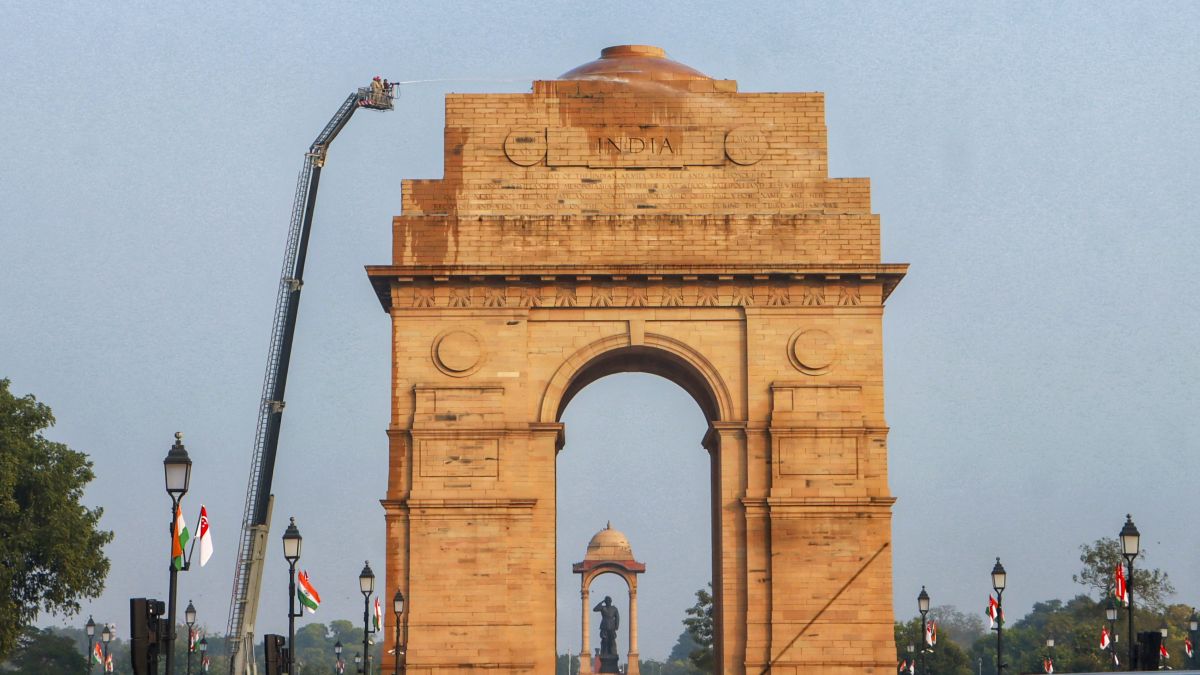“For a few seconds, it felt that the ground shook vigorously. All of us rushed out,” said a man in Haryana’s Gurugram just seconds after Delhi-NCR in India experienced a 4.4-magnitude earthquake on Wednesday.
The sudden jolt shocked residents across Delhi, Noida, Gurugram, and nearby areas; many of them rushed out of their houses and offices in panic. This prompted the National Disaster Response Force (NDRF) to put out an advisory — asking people not to panic, run outside and take the stairs while doing so.
The quake, though shallow, has once again shone a spotlight on Delhi being earthquake prone, which has also led many to ask: Can the buildings in the capital withstand seismic activity?
Delhi-NCR jolted by mild earthquake
On Thursday morning, the National Centre of Seismology noted that a 4.4-magnitude earthquake struck Delhi and nearby areas . The earthquake, which was shallow and originated about 10 km below the earth’s surface, originated around Jhajjar in Haryana and was felt across the National Capital Region.
As tremors struck the area, residents left their houses, posting videos of their fans and other household items swaying after the quake struck.
A man in Ghaziabad, Uttar Pradesh said: “I had woken up just at the time when there was a jolt. I was scared. There was another earthquake just a few days ago. Delhi-NCR experiences earthquakes quite often. So, we should be mindful of safety and precautions…”
Another resident from Haryana told news agency ANI, “We were sitting here and having tea when I suddenly felt strong earthquakes. I told everyone to rush out of the building. Everyone rushed out.”
Delhi Police informed on X that no damage has been reported across the city because of the quake. “No reports of any damage have been received so far from the earthquake that struck Delhi-NCR this morning. We pray for the well-being of all Delhi residents,” the post, roughly translated from Hindi, read.
Delhi-NCR, a seismic hot zone
Thursday’s quake is the latest one to strike the nation’s capital. Earlier, on February 17, Delhi-NCR witnessed similar tremors after a 4.0 magnitude earthquake with its epicentre in south Delhi’s Dhaula Kuan was recorded.
In fact, Delhi is prone to earthquakes and falls in the Zone IV of seismically active areas of the country, which is the second highest category. This is because of two primary reasons: first, the capital has three active fault lines running through it — the Sohna, Mathura and Delhi-Moradabad fault lines. Additionally, neighbouring Haryana region has seven such lines running across it.
Secondly, Delhi’s proximity to the Himalayan region, which also is in a high seismic zone, further makes the capital prone to receiving aftershocks.
Data from the NCS shows that the region has recorded 446 earthquakes between 1993 to 2025 within a 50 sq km radius of the Dhaula Kuan epicentre, ranging from a magnitude of 1.1 to 4.6.
High-rise living in nation’s capital
The quake on Thursday has raised concerns among residents of high-rise buildings in Delhi, Noida and Ghaziabad about structural safety and the potential impact of aftershocks. This has become even more pertinent as most buildings in Delhi-NCR are 20 floors high.
In fact, in a nationwide survey carried out in February, only 14 per cent of respondents said that they were confident that their home was earthquake-resistant. Moreover, only a whopping 87 per cent of respondents said no audit has been done on the building to check how structurally safe it is, which determines its capacity to maintain integrity during natural disasters such as earthquakes.
In 2017, the Delhi High Court noted that many buildings violated codes, lacking safety features. Moreover, many of the constructions are unauthorised or bypass safety regulations, compounding the risk in the capital.
And two years later, even the Municipal Corporation of Delhi and earthquake experts noted that 90 per cent of buildings in the capital are at risk of collapsing during a quake.
Many planning and construction experts note that despite the Bureau of Indian Standards (BIS) establishing seismic codes, its implementation remains a problem in Delhi. AK Jain, former Commissioner of the Delhi Development Authority (DDA) in a Business Standard report said, “Many illegal buildings in unauthorised colonies and urban villages have become five to six storeys high without any approved building plans. These structures often lack input from structural engineers, use substandard materials, and are not designed to withstand earthquake shocks.”
PSN Rao, a housing and architecture expert at the School of Planning and Architecture also noted that unauthorised constructions remains an issue in Delhi-NCR. “Buildings come up overnight, posing a very high risk to people living there. It is also necessary to carry out retrofitting of old buildings on a large scale across Delhi and north India, which is more vulnerable to earthquakes,” he was quoted as telling the Times of India.
But sub-standard or poor construction isn’t the only reason why building remain vulnerable. The soil on which the buildings are constructed also matters. A 2023 journal by HS Mandal from the National Centre for Seismology revealed that 75 per cent of NCR lies on water-saturated, loose alluvial soil. This kind of soil becomes more vulnerable during a quake, leading to severe structural damage.
Steps to protect buildings in Delhi-NCR
So, what can be done in order to ensure that the buildings in Delhi-NCR can withstand a quake. Experts state that a proper audit needs to be done of all the buildings to assess their quality. Also, builders and developers must ensure that they follow safety norms and use good quality materials while constructing new buildings.
In case of older constructions, retrofitting should be carried out to make the buildings stronger and safer. This can include jacketing, which is adding a layer of concrete or steel around weak beams, wall strengthening — the process of adding shear walls or braces) — and base isolation in which flexible bearings are used to reduce shaking impact.
With inputs from agencies
)